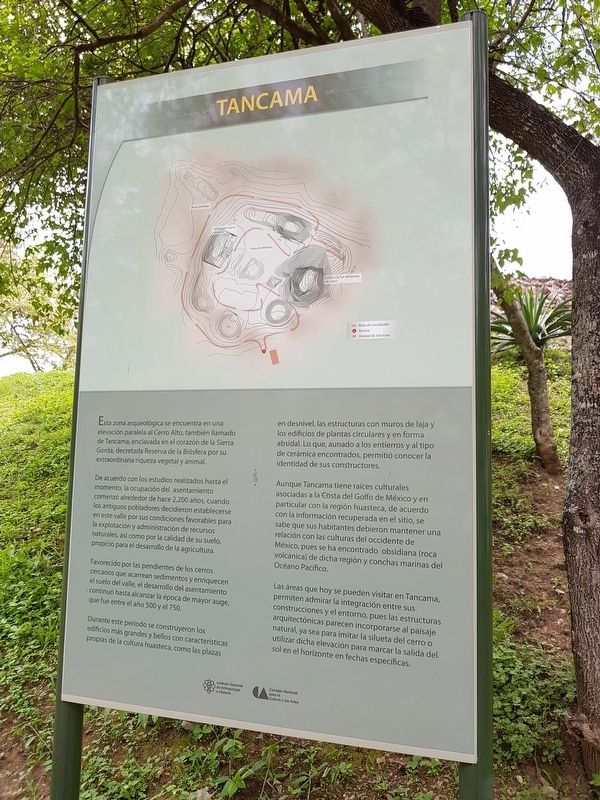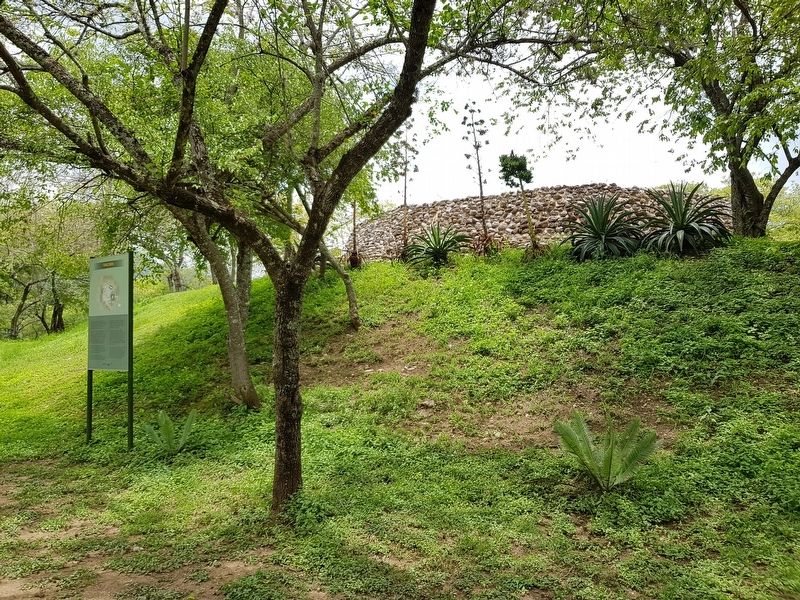Tancama in Jalpan de Serra, Querétaro, Mexico — The Central Highlands (North America)
Tancama
Esta zona arqueológica se encuentra en una elevación paralela al Cerro Alto, también llamado de Tancama, enclavada en el corazón de la Sierra Gorda, decretada Reserva de la Biósfera por su extraordinaria riqueza vegetal y animal.
De acuerdo con los estudios realizados hasta el momento, la ocupación del asentamiento comenzó alrededor de hace 2,200 años, cuando los antiguos pobladores decidieron establecerse en este valle por sus condiciones favorables para la explotación y administración de recursos naturales, así como por la calidad de su suelo, propicio para el desarrollo de la agricultura.
Favorecido por las pendientes de los cerros cercanos que acarrean sedimentos y enriquecen el suelo del valle, el desarrollo del asentamiento continuó hasta alcanzar la época de mayor auge, que fue entre el año 500 y el 750.
Durante este período se construyeron los edificios más grandes y bellos con características propias de la cultura huasteca, como las plazas en desnivel, las estructuras con muros de laja y los edificios de plantas circulares y en forma absidal. Lo que, aunado a los entierros y al tipo de cerámica encontrados, permitió conocer la identidad de sus constructores.
Aunque Tancama tiene raíces culturales asociadas a la Costa del Golfo de México y en particular con la región huasteca, de acuerdo con la información recuperada en el sitio, se sabe que sus habitantes debieron mantener una relación con las culturas del occidente de México, pues se ha encontrado obsidiana (roca volcánica) de dicha región y conchas marinas del Océano Pacifico.
Las áreas que hoy se pueden visitar en Tancama, permiten admirar la integración entre sus construcciones y el entorno, pues las estructuras arquitectónicas parecen incorporarse al paisaje natural, ya sea para imitar la silueta del cerro o utilizar dicha elevación para marcar la salida del sol en el horizonte en fechas específicas.
Tancama
This archaeological zone is located in an elevation parallel to the Cerro Alto, also called Tancama, nestled in the heart of the Sierra Gorda, declared a Biosphere Reserve due to its extraordinary vegetable and animal wealth.
According to the studies carried out so far, the occupation of the settlement began around 2,200 years ago, when the ancient settlers decided to settle in this valley due to its favorable conditions for the exploitation and administration of natural resources, as well as for the quality of the
soil, conducive to the development of agriculture.
Favored by the slopes of the nearby hills that carry sediments and enrich the soil of the valley, the development of the settlement continued until reaching its peak, between the year 500 and 750.
During this period, the largest and most beautiful buildings were built with characteristics typical of the Huastecan culture, such as the stair-stepped plazas, structures with slab walls and circular and semi-circular forms. This, coupled with the burials and the type of ceramics found, assists us in knowing the identity of its builders.
Although Tancama has cultural roots associated with the Gulf Coast of Mexico and in particular with the Huastecan region, according to the information recovered on the site, it is known that its inhabitants had to maintain a relationship with the cultures of western Mexico, since obsidian (volcanic rock) of that region has been found and also marine shells from the Pacific Ocean.
The areas that can be visited today in Tancama, allow us to admire the integration between their constructions and the environment, since the architectural structures seem to be incorporated into the natural landscape, either to imitate the silhouette of the hill or to use different elevations to mark the sunrise on the horizon at specific dates.
Erected by Instituto Nacional de Antropología e Historia y el Consejo Nacional para la Cultura y las Artes.
Topics. This historical marker is listed in these topic lists: Anthropology & Archaeology • Architecture • Man-Made Features • Native Americans.
Location. 21° 9.617′ N, 99° 23.828′ W. Marker is in Tancama, Querétaro, in Jalpan de Serra. Marker can be reached from Jalpan de Serra - Xijitla Highway (Route 120), on the left when traveling east. The marker is at the south of the Plaza del Mirador, near the visitor center at the Tancama Archaeological Site. Touch for map. Marker is in this post office area: Tancama QUE 76347, Mexico. Touch for directions.
Other nearby markers. At least 8 other markers are within 10 kilometers of this marker, measured as the crow flies. The Four Huastecans (a few steps from this marker); The Small Ballcourt (within shouting distance of this marker); The Copper Butterfly Building (within shouting distance of this marker); Plaza Santiago (within shouting distance of this marker); Buildings for the Elite (about 90 meters away, measured in a direct line); Corporal Deformation (about 90 meters away); The Building of the Attached Room (about 90 meters away); Tribute to Benito Juárez (approx. 8.3 kilometers away). Touch for a list and map of all markers in Tancama.
Credits. This page was last revised on July 24, 2018. It was originally submitted on July 24, 2018, by J. Makali Bruton of Accra, Ghana. This page has been viewed 139 times since then and 9 times this year. Photos: 1, 2. submitted on July 24, 2018, by J. Makali Bruton of Accra, Ghana.

